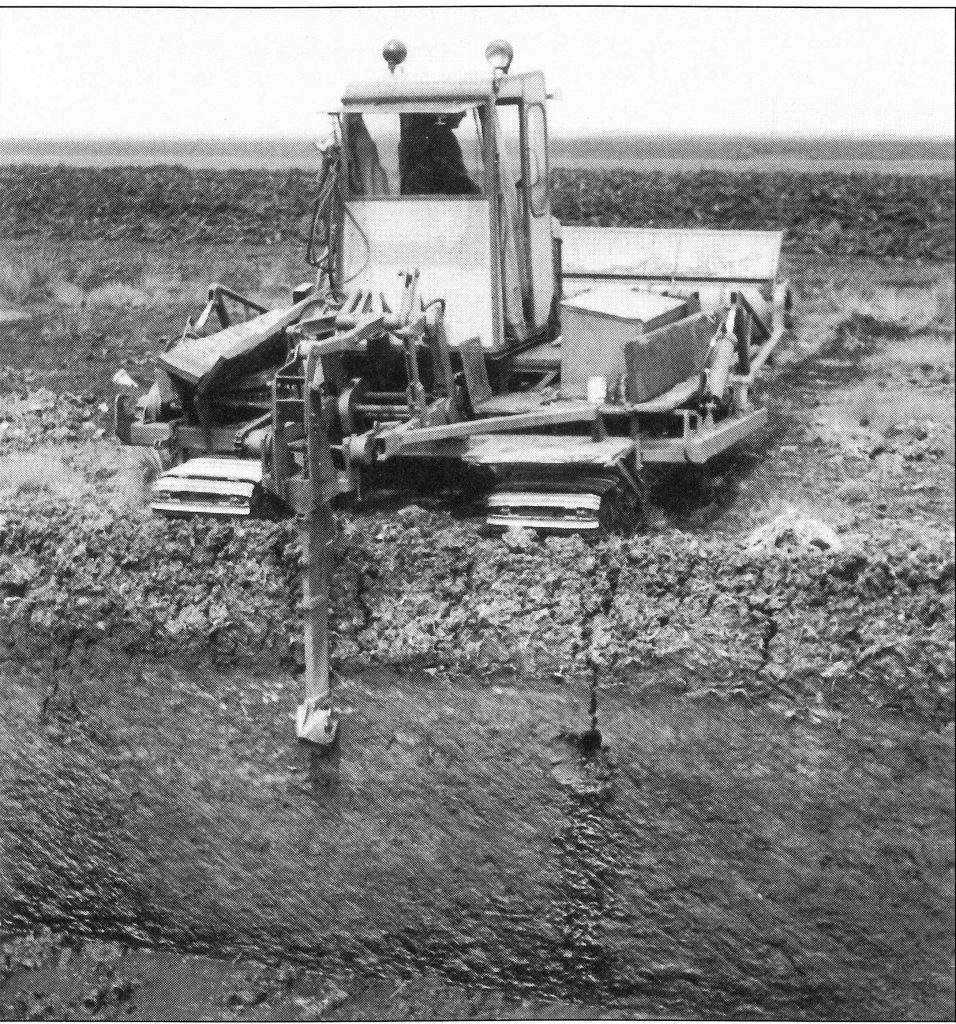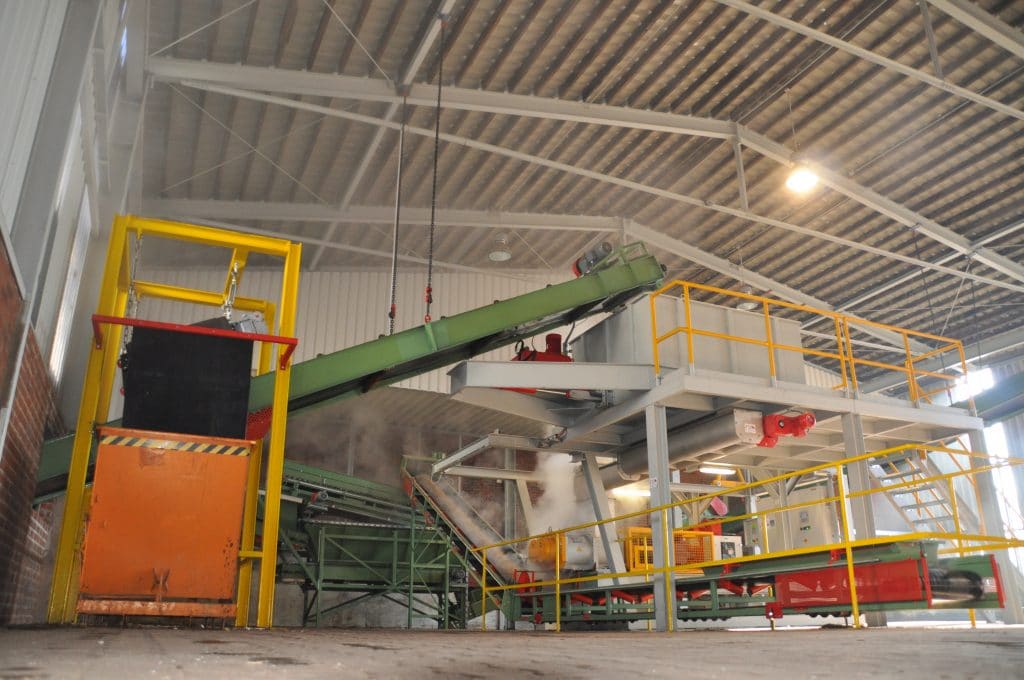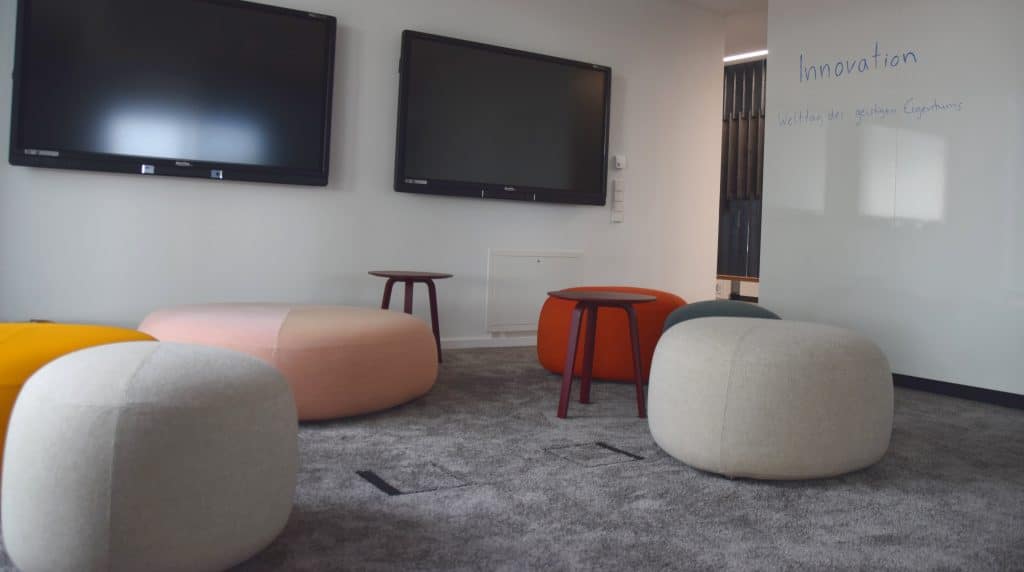Celebrating our ideas and innovations
World Intellectual Property Day
The corporate history of Klasmann-Deilmann shows that it really is possible to reinvent oneself, time and again. Our inventive spirit and creativity have repeatedly steered the company in new directions. Whether inventions in the field of mechanical engineering or new developments, such as marketing peat as animal litter, or the creation of special purpose substrates – the company has never stood still. To mark World Intellectual Property Day, the following article highlights some of our ingenious ideas to date.
Mechanical engineering
In the 1930s, the maintenance workshop at Heseper Torfwerk GmbH developed a functional mechanical engineering department which ‑ both at home and abroad, before and after the Second World War ‑ sold excavators, sod collectors and turning machines designed and built in-house. The breakthrough for Klasmann’s mechanical engineering operations came in the mid-1950s with the marketing of its patented white-peat digging machine, which cut white-peat sods and stacked them for drying in a fully automated process. It finally and definitively replaced labour-intensive hand peat cutting and soon became a big seller.

Lightweight crawler vehicle
In the late 1950s, a lightweight crawler vehicle ‑ another in-house design ‑ marked the start of mechanisation in the preparation of extraction areas. This all-purpose machine powered by a 24 h. p. diesel engine enabled equipment to be attached for ground levelling, creating drainage slits (‘Mecking Drainage’) or digging ditches.
A vibrating apparatus followed in March 1966: an innovation that turned the peat multiple times, thus drying it. This eventually evolved into a multi-purpose crawler vehicle that could be fitted with the same attachments envisaged for the lightweight crawler. This machine could now be used not only for vibration but also for drainage slitting, cleaning ditches, levelling ground and depositing spoil.
Right up to the 1980s, mechanical engineering was a mainstay of Klasmann’s operations. The final major innovation was ‘excavator no. 15’, commissioned by C. Deilmann AG, construction of which began in 1981. The machine, with a bucket-ladder excavator design unique worldwide, weighed 80 tonnes and was able to excavate and spread out 150 cubic metres of industrial peat per hour at a speed of 30 metres/hour. It dug to a width of three metres and a depth of up to 1.7 metres.
In cooperation with well-known mechanical engineering companies, we continued to develop special purpose machinery to suit our own requirements. These include the bog shuttle for loading black peat, as well as the mechanical collector and stack piling machine.
From animal litter to growing medium
When the sales of peat litter as bedding for horses began to decline as a result of increasing car ownership after the end of World War I, the company had to rethink its policies. The Peat Litter Association, which was founded in Berlin in 1919 with Georg Klasmann as one of the founder members, began to investigate other potential uses for peat in agriculture and horticulture. The formation of “Forschungs- und Werbestelle für Moostorf”, a subsidiary of the Peat Litter Association founded in Berlin in 1934 and dedicated to researching and promoting the use of peat moss, marked the start of systematic product development. Working in collaboration with Berlin University, the research scientists identified physical and chemical properties of peat which were of interest for the horticultural business, such as its low nutrient content, low pH value, high water and air capacity and high humic acid content.
To meet the demand for humus and fertiliser, the Peat Litter Association launched its blended-peat fertiliser ‘Manural’ in 1952, to be followed by ‘Super Manural’. Gardeners could now apply both humus and fertiliser at the same time. Super Manural sold so well that the ‘Heseper Torfwerk GmbH’ peat plant had to run its production facility on a double-shift basis.
In 1959, with commercial horticulture in mind, Deilmann began producing the world’s first ready-made substrate at the Sedelsberg site; it was a blend of white peat, lime, fertiliser and trace elements. Designed as a highly versatile foundation for plant growth, it was available at all times and with the same composition.
The Heseper Torfwerk GmbH began producing it in the same year, to which end it extended and modified the production facilities at the Groß Hesepe and Vehnemoor locations once again.
1974 proved a turning point in the story of the ‘Klasmann Werke’ operations. The peat-fired power station in Rühle ceased operating owing to poor efficiency, which meant the most important sales channel for black-peat-derived fuel peat no longer existed. A supply agreement for black peat dried in summer, known as industrial peat, proved a worthy follow-up solution; it concerned the delivery of peat for the manufacture of activated carbon in the Netherlands. This stroke of good fortune eased the situation at the time and allowed the company to carry out an extensive strategic realignment.
At the same time, Klasmann sought to persuade the Peat Litter Association to change its strategy and use not only white peat but also black peat in the production of growing media, but this did not receive the majority support of the Association. Klasmann Werke subsequently left the Association in order, from then on, to market its own products under its own management. A short time later the peat operations of C. Deilmann AG also parted company with the Peat Litter Association for the same reason, from which time they marketed their products under the Neuhaus brand.

Wood fibre facility
In those years, Klasmann developed a whole range of growing media based on black peat. Substrates such as Potgrond H and Potgrond P are still top sellers even now. In response to the environmental debate, Klasmann-Deilmann began to develop compost-based substrates. In 1991, the company built its first green waste composting facility in Groß Hesepe. It complies with the RHP quality assurance system, which means that the compost can be used in growing media. Klasmann-Deilmann is also active in the organic substrate sector and these products are continually adapted and improved in consultation with organic horticulture companies. Our top quality green compost TerrAktiv is an important component in organic substrates. In the late 1990s, Klasmann-Deilmann began to incorporate wood fibres in its growing media, which it initially sourced from other suppliers. In the meantime, Klasmann-Deilmann operates its own wood fibre facilities, setting new standards in the growing-media industry.
Today
Even today, the company still promotes this enterprising spirit and embraces change. The Innovation Board is aimed at promoting new ideas and suggestions on all levels and in all sectors of the company. We organise ideas workshops, an internal blog for ideas and an ideas database to make creativity an integral element of our corporate culture and to encourage employees to show initiative. We are constantly enhancing our products and alternative substrate constituents and our incubator team investigates new substrate constituents and innovative growing systems.

World Intellectual Property Day was first proclaimed by the World Intellectual Property Organization in the year 2000 at the instigation of the UNESCO. It is intended to communicate the importance of creativity and intellectual property and is celebrated on 26 April every year.